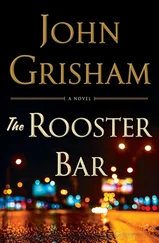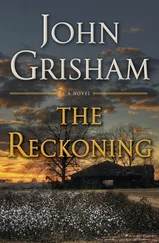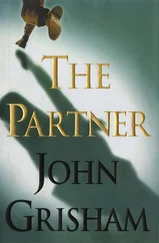“Six and two make eight.”
“That we know about, Lacy. There could be others.”
Lacy reached over and picked up the complaint but didn’t read it. “What’s in here?”
Jeri stopped rocking and rubbed her eyes as if sleepy. “Only three murders. The last three. Lanny Verno and Mike Dunwoody last year, and Perry Kronke from two years ago. Kronke’s case is down in the Keys, the big-firm lawyer who supposedly withheld a job offer when Bannick was finishing law school.”
“And why these cases?”
“Verno because it’s easy to prove his connection to Pensacola. He once lived there and I tracked him down. Easy once we show the police how to do it. It involves old dockets buried in digital bins and old files stacked away in warehouses. Stuff I found, Lacy. Spoon-feed this stuff to the cops and maybe they can put together a case.”
“They’ll need evidence for that, Jeri. Not mere coincidences.”
“True. But they’ve never heard the name of Ross Bannick. Once you tell them, once you connect the dots for them, then they can barge in with subpoenas.”
“And Kronke? Why him?”
“It’s the only Florida case and it involved travel. It takes ten hours to drive from Pensacola to Marathon, so Bannick probably didn’t do it in one day. Hotels, gas purchases, maybe he took a flight. Lots of records along the way. You should be able to track his movements before and after the murder. Look at his court dockets, see when he was on the bench, that sort of stuff. Basic detective work.”
“We’re not detectives, Jeri.”
“Well, you’re investigators, aren’t you?”
“Sort of.”
Jeri stood and stretched and walked to the window. Looking through it she asked, “Who was the guy you brought with you?”
“Darren, a colleague from work.”
“Why bring him?”
“Because that’s the way I want to operate, Jeri. I’m the boss now and I’ll make the rules.”
“Yes, but can I trust you?”
“If you don’t trust me, then take the complaint to the police. That’s where it should be anyway. I’ve never asked for this case.”
Jeri suddenly covered her eyes with her hands and cried for a moment. Lacy was stunned by the sudden emotion and felt guilty for not being more compassionate. She was dealing with a fragile woman.
Lacy handed her tissues from the bathroom and waited for the moment to pass. When Jeri finished wiping her face she said, “I’m sorry, Lacy. I’m a mess and I’m not sure how much longer I can go on. I never thought I could make it to this point.”
“It’s okay, Jeri. I promise I’ll do what I can, and I promise to protect your name.”
“Thank you.”
Lacy glanced at her watch and realized that she had been there for only eighteen minutes. Jeri had traveled four hours from Mobile. There was no sign of coffee, water, pastries, anything related to breakfast.
Lacy said, “I need coffee. Would you like some?”
“Sure. Thanks.”
Lacy texted Darren and ordered two large cups to go. She would meet him downstairs at the elevators in ten minutes. As she put her phone away she said, “Wait a minute. You included Verno because he once lived in Pensacola and that’s where he ran into Bannick, right?”
“That’s right.”
“But he’s not the only one from Pensacola. The first one, the scoutmaster, Thad Leawood, grew up in town, not far from Bannick. Murdered in 1991, right?”
“Correct as to the year.”
“And you think he was the first?”
“I hope so, but I don’t really know. No one does but Bannick.”
“And the reporter, Danny Cleveland, wrote for the Pensacola Ledger and lived there about fifteen years ago. Found dead in his apartment in Little Rock in 2009.”
“You’ve done your homework.”
Lacy left the room shaking her head. She got the coffee from Darren and was back in minutes. Jeri ignored hers on the credenza. After a long sip, Lacy walked to the door and back and said, “In the first round of files, the stuff you gave me initially, there are two women among his victims. But you don’t say much about them. Can you tell me more?”
“Sure. When he was an undergrad at Florida, he knew a girl named Eileen Nickleberry. He was a frat boy, she was in a sorority, and they partied in the same circles. They were at a social one night in the Pike house on campus and everybody was drinking. A lot of booze, pot, casual sex. Bannick and Eileen went to his room and, evidently, he couldn’t perform. She laughed at him, had a big mouth, told others, and he was humiliated. He became the butt of a lot of jokes around the frat house. That was around 1985. Some thirteen years later Eileen was murdered near Wilmington, North Carolina.”
Lacy listened in disbelief.
Jeri continued, “The other girl was Ashley Barasso. They were in law school together at Miami, that much is certain. She was murdered by strangulation, same rope, six years after they graduated. I know less about her than any of his other victims.”
“Where was she murdered?”
“Columbus, Georgia. Married with two small children.”
“That’s awful.”
“They’re all awful, Lacy.”
“Of course they are.”
“You see, my theory is that Bannick has a real problem with sex. Probably goes back to the abuse when he was eleven or twelve at the hands of Thad Leawood. He probably didn’t get the help and support he needed. That’s not unusual with kids. Anyway, he has never recovered from it. He murdered Eileen because she laughed at him. I don’t know what happened between him and Ashley Barasso and will probably never find out. But they were at the law school together, the same class, so it’s safe to assume that they knew one another.”
“When they were murdered were they sexually molested?”
“No, he’s too smart for that. At a crime scene the most important piece of evidence is the corpse. It can and usually does reveal so much. Bannick, though, is careful and leaves behind only the rope and the blow to the head. His motive is always revenge, except for Mike Dunwoody. Poor guy just timed things badly.”
“Okay, okay. Please allow me to say something that’s pretty obvious here. You’re an African American woman.”
“True.”
“And I’m guessing that in 1985 or so the fraternity life at the University of Florida was basically all-white.”
“Indeed.”
“And you’ve never been a student there?”
“Never.”
“So, how did you manage to get the story about Bannick and Eileen? It’s all hearsay and third-hand and urban legend, all remembered and told by a bunch of drunk rich kids. Right?”
“For the most part, yes.”
“So?”
Jeri reached for a large, well-worn briefcase, snapped it open, and pulled out a book. She handed it to Lacy who took it and stared at it.
“Who’s Jill Monroe?”
“Me. It’s a book I self-published, one of several, all with different pseudonyms, all by me. The publisher is a low-end vanity press out West. It’s basically unreadable and not intended to be really read by anyone. It’s part of the disguise, Lacy, part of the fiction that is my life.”
“What’s in the book?”
“True crime, stuff I pulled off the Internet, all stolen but not copyrighted.”
“I’m listening.”
“I use these to get attention and establish credibility. I show up claiming to be a veteran writer of true crime and police stories. Freelance, of course, always freelance. I say I’m working on a book about cold cases involving young women who were strangled. In this case, I checked the listings of fraternities and sororities at UF and finally put together the puzzle. None of Eileen’s old friends would talk. It took months, even years, but I finally found a frat brother with a big mouth. Met him in a bar in St. Pete and he claimed to have known Eileen, said lots of boys did. Said he had not talked to Bannick in years, but, after a few drinks, he told me the story about his bad night with Eileen. Said Bannick was really humiliated.”
Читать дальше












